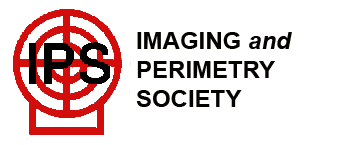 |
|
|
|
The age of isopter perimetry: Bjerrum and the tangent screenThe first book devoted entirely to visual-field testing was written by Wilhelm Schön and was published in 1874. The work was performed in Professor Horner’s clinic in Zürich. Schön used an arc perimeter and he did not work closely with the central 10°. He discussed the characteristic kinds of field loss found in glaucoma, retinitis pigmentosa, retinal detachment, embolism of the central artery of the retina, retrobulbar neuritis, toxic amblyopia, and chiasmal disease. The next book on the subject, Richards Pauli’s Beiträge zur Lehre vom Gesichtfeld "Contribution[s] to the Science of Visual Fields", was published the following year, 1875. These works were devoted only to perimetry, that is, to identifying the perimeter (the very outside limits) of the visual field. They used only one, fairly large stimulus and were not concerned with partial defects. This was ‘the modern way’; von Graefe’s tangent screen was considered old-fashioned. During most of the 1870s and 1880s it was generally accepted that the arc perimeter was also satisfactory for mapping central field defects. From this mistake came the idea that there were no central defects of any clinical importance and that the perimeter was the only proper way to plot visual fields. As Ralph Lloyd later suggested, this was very much like measuring visual acuity with only a 20/40 line, which the patient would either pass or fail.
Julius Hirschberg stubbornly stuck with a tangent screen marked with rings out to 45°. He studied his patients’ visual fields very carefully with this simple device and, in 1875, coined the term ‘campimetry’ for the tangent screen technique to distinguish it from ‘perimetry’. In his case series, he documented chiasmal visual field defects, and homonymous hemianopia.
In 1881, Uhthoff mounted a small campimeter screen onto his Förster arc perimeter. In these years mechanical ingenuity was given free rein. McHardy’s machine kept the patient firmly in place and at the correct distance with a bite bar and a cheek rod. It came with an accessory campimeter plate and a hot lamp overhead. The field could be plotted by pressing the plate against a moving pencil at frequent intervals. Albertotti’s machine had a head-stabilizing arm and another arm that held an occluder. Under the table, movements of the arc and the test object were transmitted to a pencil holder by strings and pullies. All the patient had to do was tap. Meyerhausen’s perimeter was perhaps overly clever. The cranks that moved the pencil over the chart also moved the test objects at the end of a long arm. There seemed to be a demand for something simpler; and Dana offered his 'Pocket Perimeter'.
The first perimeter that registered the patients responses was by Stevens in 1881 (introduced at the AMA meeting of that year). Details of other interesting devices can be found in Ralph Lloyd’s excellent article "Evolution of perimetry."
In America, Alexander Duane, Harry Friedenwald, Clifford B Walker and Luther C Peter popularized the work of Bjerrum and Rønne. Duane and Friedenwald put their stamp of approval on the new techniques and recommended a 'tangent curtain'; Peter wrote a popular book on the subject.
In Scotland the major innovators were AHH Sinclair (1905 and 1906) and Harry Moss Traquair of Edinburgh (from 1914 to 1949). Traquair used both an arc perimeter and a 2-m tangent screen. His many astute insights into visual-field interpretation made his book very popular. It has since become a perimetry ‘classic.’
Ralph I Lloyd, developed the stereocampimeter (below), a device that made it possible to fix with one eye and plot the suppression scotoma in the other, amblyopic, eye.
The perimeter of Feree and Rand (1924) not only supplied its own controlled illumination but had a small campimeter attached to the arc. This little tangent screen could be used for careful central field testing but could also be slipped along the arc so that free hand scotoma mapping could be done anywhere in the periphery.
The Aimark version of Maggiore's self-recording perimeter (below) was one of the last arc perimeters offered for sale. Bowl perimeters were about to sweep the field.
continue to The age of Standardization: Hans Goldmann 1945 back to Measurement of the visual field limits: the perimeter back to Table of Contents
Copyright 2008. Imaging and Perimetry Society | ||||||||||||||||||||||||||||||||||||||||||